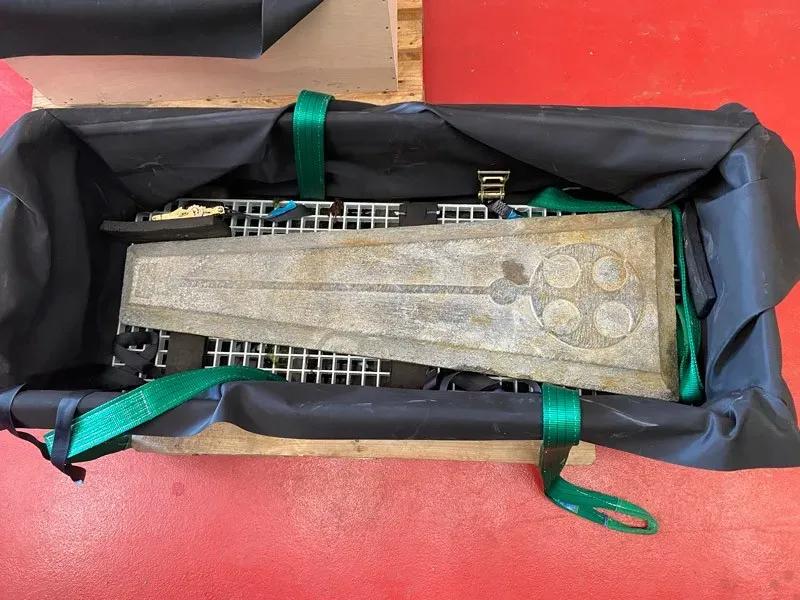Scroll For More

Score (97)
Family First: Birds' Remarkable Bonds Just Astonished Scientists
Long-tailed tits, those charming little birds often seen flitting around UK gardens, have revealed a remarkable family dynamic that rivals human kinship. Researchers at the University of Sheffield have uncovered that these birds maintain strong familial bonds even during migration, with childless adults stepping in to help raise their relatives' young. Published in the Journal of Animal Ecology, this study sheds light on cooperative behavior—a phenomenon where some animals forgo breeding to assist others. In long-tailed tits, unsuccessful breeders often become vital helpers for related pairs, echoing human family support systems. The research team from the University of Sheffield's School of Biosciences analyzed 30 years of data and found that these birds migrate in family units. This ensures they arrive ready to cooperate with their kin—a first documented instance among cooperative bird species. "This 30-year study is unique in its depth," said Dr. Jennifer Morinay, co-lead author and post-doctoral research associate at the university. "The discovery of family ties persisting through migration is particularly exciting." Key factors influencing whether a bird becomes a helper include breeding success or failure, familial connections, and opportunities within their kin group. External pressures like predator numbers also shape cooperative behaviors. The study highlights that helping benefits diminish as individuals disperse further from their birthplace. "The push and pull between cooperation and competition is something we readily recognize in our own lives," said Professor Ben Hatchwell, co-lead author and professor of evolutionary ecology at the university. Future research will explore how long-tailed tits recognize relatives through calls, smells and social bonds to further understand cooperative breeding mechanisms in this intriguing species.

Score (98)
United Nations Recognizes Swiss Yodelling as World Cultural Heritage
Yodelling, the centuries-old singing tradition rooted in the Swiss Alps, has officially been added to UNESCO’s Representative List of the Intangible Cultural Heritage of Humanity. The announcement came Thursday during a UNESCO meeting in New Delhi. Switzerland’s culture ministry celebrated the move, calling yodelling “the emblematic song of Switzerland” and describing it as “deeply rooted in the population.” Unlike previous UNESCO bids that involved cross-border efforts — such as the successful 2020 application with France to recognize Jura mountain watchmaking — Switzerland submitted the yodelling nomination on its own. Yodelling is also practiced in parts of Austria and Germany, but it holds a special place in Swiss culture. More than 12,000 Swiss yodellers are registered with the country’s Federal Yodelling Association, which includes over 700 local groups. The vocal technique involves alternating between chest and head voice, using syllables without meaning that often reflect regional dialects. It’s typically passed down within families, community clubs, or music schools, and is just as likely to be taught informally between singers. “Natural yodelling consists of melodies without lyrics,” the ministry said, while “yodelling songs combine verses and refrains and often touch on nature and everyday experiences.” Whether performed solo, in small ensembles, or as part of larger choirs — and sometimes accompanied by instruments like accordions — yodelling remains a vibrant part of Swiss life, featured at concerts, festivals, and singing competitions. These performances are often paired with regional costumes, adding another layer of cultural identity to the music. UNESCO’s recognition is likely to bolster efforts to preserve and promote the tradition, which has long echoed through the Alpine valleys and now finds itself officially protected as part of the world’s shared cultural heritage.

Score (97)
She Flew 7,000 Kilometres for a First Date — And It Just Might Be Love
The holidays can feel extra lonely when you're still looking for love. But Dallas comedian and actress Theresa Rowley decided to take a leap—and a long flight—to change that. After weeks of online chats and FaceTime calls with Sean Rooney, a man from Longford, Ireland, Rowley boarded a plane and flew more than 7,000 kilometres for their very first date. “Terrified,” she admitted, when asked how she felt before meeting. “But I felt in my gut it was a safe situation.” Rowley, who shares much of her life online with thousands of followers, says that despite her growing platform, fame hasn't exactly made dating easier. “It was difficult, and it was quite lonely,” she said. “So I focused on other things, being creative.” That changed when Rooney sent her a message. “He shot me a message, and it was a nice compliment, in that creative Irish way,” Rowley said. “I’d see Theresa pop up online and I’d think, ‘This girl is funny,’” Rooney recalled. “I figured it couldn’t hurt to try.” Just in case, Rowley brought a friend along for the trip. But once the pair met in person, the nerves melted away. “He just seemed to understand me,” she said. “I just knew it was going to be something.” Rowley began documenting their relationship online, and the story quickly went viral. It even caught the attention of Ireland’s media and tourism department, which later flew her back for another visit at no cost. Rooney has since made the trip to Texas, sampled brisket and Buc-ee’s, and joined Rowley’s family for Thanksgiving. “The difficult part is not being able to reach out and touch that person,” Rooney said of their long-distance setup. “But it hasn’t prevented us from getting to know each other well.” A 2025 global study found that one in six couples now meet online—a 21 percent increase since 2010. Rowley and Rooney are one of them. For now, the couple is taking things day by day, enjoying what they’ve found and sharing it openly in the hope that others might take the same leap. “We never saw this coming,” Rowley said. “Don’t give up,” Rooney added. “You just have to believe there’s another connection out there for you.”

Score (95)
750-year-old “mortar Wreck” Takes Center Stage at Newly Reopened Poole Museum
What began as a hunch from a local charter boat skipper has turned into one of the most important maritime discoveries in England’s recent history — and now it has a permanent home at the Poole Museum. Known as the “Mortar Wreck,” the remarkably well-preserved remains of a 13th-century cargo ship were discovered off the coast of Dorset in 2020 by skipper and scuba diver Trevor Small. The site, long dismissed by experts as underwater debris, turned out to be England’s oldest known protected wreck with a surviving hull. Now, the shipwreck is the focus of a brand-new gallery at the Poole Museum, which reopened last month following a multi-million-dollar renovation. Located about 185 kilometers southwest of London, the museum is giving visitors a rare look at life — and death — at sea nearly 800 years ago. “This is the kind of story you can’t help getting sucked into,” said collections officer Joe Raine. “Hopefully [visitors] start to see a little of themselves in those people from 800 years ago.” Dating to around 1250 C.E., the Mortar Wreck was carrying a heavy load of Purbeck stone — including limestone gravestone slabs and grinding mortars — when it sank just a mile from shore in Poole Bay. The vessel is a classic example of a “clinker” ship, built using overlapping wooden planks. Tree-ring analysis shows the wood likely came from Irish oak felled between 1242 and 1265, though its exact place of construction remains unknown. The ship’s demise is still a mystery, but experts believe the heavy cargo may have contributed to its sinking — especially if the vessel ran into stormy weather shortly after leaving Poole Harbour. “It’s close enough to swim to shore, but, in stormy weather, it could have been fatal,” said marine archaeologist Hefin Meara of Historic England. After centuries under water, the Mortar Wreck was protected by layers of sand, stones, and low-oxygen water, which helped preserve the wooden hull and its cargo. Since the discovery, maritime archaeologists from Bournemouth University, including Tom Cousins, have been diving and excavating the site. Among the items recovered are cooking cauldrons, limestone mortars, and two massive gravestone slabs in unusually good condition. One features a wheel-headed cross, popular in early 13th-century England, while the other bears a splayed arm cross design typical of the mid-century. The slabs weigh 154 and 440 pounds respectively and may have been coffin lids or crypt monuments intended for high-status members of the clergy. “They’re remarkably well preserved,” said Cousins. “The 13th century is the heyday of the marble industry — you won’t find a church or cathedral that doesn’t have Purbeck marble in it.” The stone, technically a type of limestone formed from freshwater snail shells, is locally known as “Purbeck marble” because of its ability to polish to a glossy finish. It was widely used in medieval Britain and across Europe in religious monuments and major buildings such as the Tower of London and Westminster Abbey. The Mortar Wreck has now taken its place alongside other important maritime finds at the Poole Museum, including an Iron Age logboat discovered in 1964 and artifacts from the nearby Swash Channel Wrecks and Studland Bay. The new exhibit also coincides with the wreck’s recent appearance in a new episode of the Time Team archaeology series. As for Trevor Small, the man who first suspected there was something more beneath the waves, his instincts have now helped reshape the historical record. What was once mistaken for underwater “rubbish” is now a centerpiece of national heritage — a shipwreck that not only tells a story of trade, craftsmanship, and tragedy, but also connects today’s visitors with the people and priorities of medieval England.

Score (68)
Original Star Wars Poster Art Sells for $3.9 Million, Setting Franchise Record
Before Star Wars became a global pop culture juggernaut — before the lightsabers, the droids, and the Force — there was just a painting. A dramatic, airbrushed image of a dark-masked villain and mysterious heroes, hovering over newspaper pages, street billboards, and bus stations in the spring of 1977. That painting, created by artist Tom Jung as the original half-sheet poster for Star Wars: Episode IV – A New Hope, has just sold at Heritage Auctions for $3.9 million, making it the most expensive Star Wars item ever sold. Jung’s composition wasn’t just promotional artwork — it helped establish the visual tone of the entire franchise. Using acrylic and airbrush techniques, Jung crafted a carefully balanced piece centered on the towering figure of Darth Vader and the deep blues of outer space. Around that ominous presence, he introduced the film’s key relationships: Luke Skywalker and Obi-Wan Kenobi, and Skywalker with Princess Leia, arranged in precise triangular forms. An arrow-like streak of X-wing fighters added motion, promising the space battles to come. “The composition had to share enough of the story to entice audiences yet remain evocative enough to leave people wanting more,” said Charles Epting, director of consignments at Heritage Auctions. “It draws from classic fantasy illustrators such as Frank Frazetta and is a refreshingly analog take on a high-tech universe. It remains as impactful now as it was nearly 50 years ago.” That impact was immediate. Jung’s poster ran as a two-page spread in newspapers and was plastered across public spaces just ahead of A New Hope's debut. Even before audiences knew what Star Wars really was, this artwork hinted at the depth and drama waiting in George Lucas’s galaxy far, far away. After the film’s release, the painting hung in the California office of producer Gary Kurtz before moving to his family home. It was put up for auction by his daughter, Melissa Kurtz. The bidding opened at $1 million and quickly shot past the previous record for movie poster art: Bob Peak’s Apocalypse Now, which sold for $687,500 earlier this year. It also narrowly surpassed another Star Wars artifact that made headlines in September — a chipped and weathered Darth Vader lightsaber used in The Empire Strikes Back and Return of the Jedi, which sold for $3.6 million at Propstore. Jung’s poster taps into the enduring nostalgia and emotional connection fans have with the franchise, Epting said. And that connection, nearly 50 years later, is only growing stronger. “This painting helped introduce the world to Star Wars,” he said. “It was the first image people saw. And for many, it’s still the one they remember most.”

Score (96)
U.S. Approves First At-Home Brain Stimulation Device For Treating Depression
In a first for mental health treatment, the U.S. Food and Drug Administration has approved a wearable brain stimulation device designed to treat depression at home — marking a new step toward tech-based alternatives to antidepressant medications. The device, developed by Swedish company Flow Neuroscience, is a headset that delivers gentle electrical currents to the brain using a technique called transcranial direct current stimulation (tDCS). It targets the dorsolateral prefrontal cortex, a brain region long associated with mood regulation and depression. “This is a watershed moment for the treatment of depression,” said Flow Neuroscience CEO Erin Lee. “It’s the first step in moving from pharmaceutical treatments to tech-based therapies with minimal side effects.” The device will be available by prescription for adults diagnosed with moderate to severe major depressive disorder. Flow is currently in talks with insurance providers to determine whether the $500 to $800 device will be covered. While tDCS has been studied for years, results have been mixed. A 2023 study published in The Lancet found the technique no more effective than a placebo. But other research — including a 2024 Phase 2 clinical trial involving 174 participants — tipped the scales in Flow’s favor. That trial found that people who used the headset for 30 minutes a day over 10 weeks reported significantly greater improvement in depressive symptoms than those in the control group. In its approval announcement, the FDA described the benefit as “modest” but concluded it was “sufficient to outweigh its probable risk.” Reported side effects included mild skin irritation and occasional headaches. Unlike treatments such as electroconvulsive therapy (ECT) or transcranial magnetic stimulation (TMS), which require clinical visits, Flow’s device is designed for home use — making it a potentially more accessible option for many people. The approval expands the toolkit available for treating depression, which affects more than 20 million adults in the U.S. alone. While antidepressants remain the most common approach, many patients either don’t respond well to medications or prefer non-pharmaceutical options due to side effects or personal preference. The FDA’s decision also signals a growing openness to tech-based mental health tools that prioritize convenience and low risk. Flow’s headset won’t replace other treatments, but it may offer a useful alternative — particularly for people looking to manage their depression without medication. The device is expected to enter the U.S. market in the coming months.

Score (97)
TikTok Crowns Connie Francis' 1962 Hit "Pretty Little Baby" as Top Global Song of 2025
More than six decades after it was first recorded — and long after it faded into obscurity — Connie Francis’ 1962 ballad “Pretty Little Baby” is now officially the biggest song in the world, thanks to TikTok. The platform named it its Top Global Song of 2025, after the track was used in more than 28.4 million posts, generating a staggering 68.6 billion views. One standout video featuring Kylie Jenner and her daughter Stormi alone drew over 132 million views, helping catapult the song to viral fame. TikTok described the track as “the perfect soundtrack for wholesome videos featuring family members, pets, relationships and flowers.” It surged to the top of the platform’s music charts in May and has remained a fixture in trending audio ever since. The song’s resurgence was as unexpected as it was emotional for Francis, who was 87 when she joined TikTok in early 2025 to thank fans directly. “I’m flabbergasted and excited about the huge buzz my 1962 recording of ‘Pretty Little Baby’ is making all over the world,” she said in her first post, adding that the experience was “truly overwhelming.” In an interview with PEOPLE earlier this year, Francis admitted she had forgotten about the track altogether. “To tell you the truth, I didn’t even remember the song!” she said in May. “I had to listen to it to remember. To think that a song I recorded 63 years ago is touching the hearts of millions of people is truly awesome.” She called the moment “a dream come true,” and said she was especially moved that “kindergarten kids now know my name and my music.” Pretty Little Baby was originally released as part of her 1962 album Connie Francis Sings Second Hand Love & Other Hits, and was one of 40 songs she recorded during a set of sessions in August 1961. The track never charted during its original release and, until now, had largely been forgotten — even by the singer herself. That all changed in 2025, when the song unexpectedly became Francis’ most-streamed track, earning over 130 million plays on Spotify and landing on both the Billboard Global 200 and the U.K. Official Chart. Multiple official audio versions of the song took off across TikTok, often layered under soft-focus videos of babies, reunions, surprise proposals, and emotional tributes. The viral revival of Pretty Little Baby brought an entirely new audience to Francis, a pop icon who was the first woman ever to hit No. 1 on the Billboard Hot 100 and a defining voice of the late 1950s and early ’60s. Francis passed away on July 16, 2025, just two months after her TikTok moment peaked. But not before she had the chance to watch a new generation embrace her voice — millions of people who weren’t born when the song was recorded, but still felt something in it. She called the experience “one of the best surprises of my life.” And for a generation of TikTok users, it was the start of discovering a voice they never knew they needed.

Score (97)
Leading Team USA as its First-Ever Honorary Coach for the 2026 Winter Olympics: Snoop Dog?
Team USA just got a new coach — and he’s got a lot more swagger than your average sideline presence. The United States Olympic & Paralympic Committee announced that Snoop Dogg has officially joined as the first-ever honorary coach for Team USA, just months ahead of the 2026 Winter Olympics in Milan-Cortina. The rapper, entrepreneur, and Olympic superfan will bring his signature style, humor, and heart to support U.S. athletes in their quest for gold. “I’m just here to cheer, uplift and maybe drop a little wisdom from the sidelines,” Snoop said in a statement. “Team USA athletes are the real stars. This team represents the best of what sport can be: talent, heart and hustle. If I can bring a little more love and motivation to that, that’s a win for me.” The new role builds on Snoop’s widely praised involvement during the 2024 Paris Olympics, where he carried the torch at the Opening Ceremony, performed at the Closing Ceremonies, and brought along his granddaughter to share in the experience. He quickly became one of the most talked-about personalities of the Games, mixing sports commentary with viral moments and off-the-cuff interviews. According to the USOPC, Snoop will also help raise awareness and resources for the Team USA Fund, which directly supports athletes through mental health services, education, training, and career development. The fund also benefits “the team behind the team” — the coaches, medical experts, administrators, and partners who keep the athletes going. “From the moment Snoop met Team USA athletes, there was an instant connection — mutual respect, genuine curiosity and a lot of laughter,” said USOPC CEO Sarah Hirshland. “His enthusiasm for the Olympic and Paralympic Movement is contagious, and we’re thrilled to officially welcome him as a member of the Team Behind the Team.” The committee also cited Snoop’s passion for mentorship and community impact, praising his ability to elevate young people while staying grounded in authenticity. Snoop’s Olympic journey began with a surprise turn as a commentator in Paris, where he charmed audiences with his laid-back delivery, knowledge of the Games, and viral moments with legends like Billie Jean King and Michael Phelps. He also shouted out athletes like Simone Biles and Coco Gauff and was often seen courtside, poolside, or just tying his granddaughter’s shoes between events. “Over the years I felt like I positioned myself for this,” Snoop told People after the Summer Games. “Showing I’m reliable, professional, that I know what I’m doing, and people love to see me.” He also thanked NBC for “taking a chance on somebody like me that’s kind of rough around the edges,” adding, “It’s an advantage to everybody looking at this that come from where I come from.” The USOPC said Snoop is already at work in his new role, helping build awareness for the Team USA Fund and encouraging fans to support American athletes as they prepare for the 2026 Winter Olympics and beyond. The Games kick off on February 6 in Milan-Cortina.

Score (97)
Her Dog Found Her Cancer — Now She’s in a Groundbreaking Trial to Stop it From Coming Back
When Chase Johnson’s dog started acting strangely, she didn’t think much of it. He was anxious, unusually clingy, and one day, pressed his nose into the side of her breast. That’s when she felt the lump. “I wasn’t someone who was good at doing self-exams. I don’t think I would have found it otherwise,” said Johnson, now 36, from Cary, North Carolina. She was 31 at the time and had no family history of breast cancer. In February 2021, Johnson was diagnosed with triple-negative breast cancer, one of the most aggressive and difficult-to-treat forms of the disease. Unlike other types of breast cancer, triple-negative tumors don’t carry the usual receptors — estrogen, progesterone, or HER2 — that allow for targeted drug therapy. Chemotherapy remains the primary treatment, and recurrence rates are high. Johnson went through four months of intravenous chemo, followed by surgery to remove her tumor and lymph nodes. That was just the start. She then underwent six months of oral chemotherapy and 24 rounds of radiation. Her treatment was successful, but the fear of recurrence lingered. About 40 percent of women with triple-negative breast cancer see the disease return within five years. And in roughly a third of those cases, it spreads to the brain. Other common sites include the lungs, liver, and lymph nodes. So when Johnson heard about a clinical trial testing a vaccine aimed at preventing triple-negative breast cancer from returning, she signed up. “I am literally doing anything possible to make sure this doesn’t come back,” she said. “For triple-negative, the resources are so limited; if the traditional treatment methods don’t work, you’re just kind of out of luck.” The early-stage trial, run by the Cleveland Clinic, is testing a vaccine that targets a protein called α-lactalbumin. It’s found on the surface of tumor cells in around 70 percent of triple-negative breast cancers. The idea is to train the immune system to recognize and destroy any future cells that express this protein. Johnson was one of 35 participants in the Phase 1 trial, which was designed to evaluate safety and whether the vaccine triggers an immune response. Researchers presented the findings this week at the San Antonio Breast Cancer Symposium. So far, results are promising. About 74 percent of the women developed an immune response to the vaccine, and no serious side effects were reported. The most common reactions were minor — redness or a small lump at the injection site. “We don’t know yet whether this immune response will reduce the risk of recurrence or prevent breast cancer,” said Dr. G. Thomas Budd, the Cleveland Clinic oncologist leading the trial. “But it’s a step forward.” The vaccine isn’t suitable for everyone. Because women naturally produce α-lactalbumin when breastfeeding, there's a risk the vaccine could trigger an unwanted immune response. Budd advises against enrolling in the trial if a woman still plans to nurse. The 35 women in the trial were split into three groups: those like Johnson who had completed treatment and were cancer-free but at high risk of recurrence; women who still had cancer cells after treatment; and women who had never been diagnosed but carried a genetic risk, such as a BRCA mutation. A Phase 2 trial is expected to begin late next year, and that’s when researchers will start measuring whether the vaccine actually reduces recurrence rates. If successful, future trials could focus on prevention in high-risk patients. Experts say the vaccine’s biggest potential lies in stopping the disease before it starts or before it comes back — not necessarily in fighting tumors that are already present. “Over time, tumor cells can learn how to hide target proteins from the immune system,” said Justin Balko, co-leader of the Breast Cancer Research Program at Vanderbilt-Ingram Cancer Center. “New cancer cells are less likely to develop this ability.” Dr. Larry Norton of Memorial Sloan Kettering Cancer Center said that finding reliable targets is key. For triple-negative breast cancer, which lacks the usual hormone or HER2 receptors, chemotherapy has remained the default. He hopes that could change. “There was a time when we would say HER2 is the worst type of breast cancer you can have,” Norton said. “Then along came HER2-targeting therapies and now all of the sudden one of the worst prognosis markers becomes one of the best. This could be the story of triple-negative breast cancer if we find a target for it.” For Johnson, participating in the trial is about hope — not just for herself, but for other women with few treatment options. “I’ve done everything I could with what was available,” she said. “Now I’m doing what I can to make sure there’s more available in the future.”

Score (97)
A Spectacular Meteor Shower is Set to Illuminate the Night Skies This Weekend
If you’re willing to brave the cold, the night sky is about to reward you. The Geminid meteor shower, one of the most spectacular sky shows of the year, will peak this weekend — overnight from Saturday, December 13 to early Sunday, December 14. Under ideal conditions, skywatchers could see up to 150 meteors per hour, with activity highest around 08:00 UTC (3:00 am EST). “Although the Perseids, which arrive every August, are better known, the Geminids usually put on a better show,” said Sky & Telescope Editor in Chief Diana Hannikainen. “Just make sure to bundle up!” Unlike most meteor showers that originate from icy comets, the Geminids come from a bizarre hybrid object called 3200 Phaethon — a rocky body with traits of both an asteroid and a comet. As it orbits the Sun on a long, looping path that crosses Earth’s, it leaves behind a trail of dusty debris. When our planet moves through that trail each December, tiny fragments burn up in the atmosphere, streaking across the sky as bright, colorful meteors. They appear to radiate from the constellation Gemini — near the star Castor — which is how they get their name. What makes the Geminids special isn’t just their volume. They're also known for being bright and richly colored, often glowing green, yellow, or blue as they fall. They move relatively slowly compared to other meteors, making them easier to spot and capture in photographs — though they don’t usually leave long trails. The timing is also nearly perfect. The Moon will be just 26 percent full and in a waning crescent phase, meaning its light won’t drown out the display. And even if you miss the main peak, there should still be a good show on the nights before and after, as long as skies stay clear. No telescope is needed. Just head to a dark location away from city lights, dress warmly, and give your eyes 20–30 minutes to adjust. Then lie back, look up, and enjoy the view. The next big meteor shower after the Geminids will be the Quadrantids in early January. But with a full Moon expected during their peak, this weekend may be your best chance to catch nature’s fireworks until spring.

Score (98)
A Rescued Turtle Found a New Friend, Sparking Hope in Recovery Journey
For nearly 50 years, Rockalina the turtle knew only the confines of a kitchen floor. She lived in a New York apartment after being taken from the wild in the 1970s, spending decades crawling across linoleum, her claws bent from hard surfaces, her limbs tangled in cat hair, and her diet made up largely of cat food. She was treated more like furniture than a living creature. But now, after almost half a century of neglect, Rockalina is finally getting a taste of what it means to be a turtle. And she’s no longer alone. This week, the eastern box turtle met another of her kind for the first time—a tiny hatchling, about the size of an Oreo. “That was the very first time she came nose-to-nose, like right in the face of her own kind,” said Chris Leone, who runs Garden State Tortoise, a sanctuary in New Jersey that rescued Rockalina in February. The moment, caught on video and shared with Leone’s more than 1 million Facebook followers, was quiet but emotional. Rockalina walked alongside the baby turtle, let it get ahead, sniffed it gently, and even shared a strawberry. “It was a beautiful moment,” Leone said. Rockalina’s transformation over the past 10 months has been nothing short of astonishing. When Leone first brought her in, she looked mummified. “She was wan, looked near death, and her eyes were covered in dead skin,” he told NPR. But slowly, her body began to recover. Her skin, once pale and rubbery, is now a healthy, mottled brown. Her eyes are clear, a deep mahogany. She’s been digging in the dirt, chasing worms, and devouring strawberries with gusto. “She has spent the last 10 months getting to be a turtle,” Leone said, “because she was treated like anything but that for almost 50 years.” The eastern box turtle is a species once common across the eastern United States, typically found near ponds or in meadows and woodlands. Their numbers have declined sharply due to habitat loss, traffic, and the pet trade—an issue highlighted by Rockalina’s story. She was taken from the wild, like so many others, and kept as a pet in unnatural conditions. Turtles like her are able to completely close their shells to avoid predators, but they’re helpless against long-term captivity. Leone hopes Rockalina’s story changes that. “If we can get people to learn to appreciate them, leave wild turtles wild, and just enjoy them for all their beauty and charisma, then it’s a win,” he said. “And Rockalina has really been such a massive stepping stone for that.” Despite the common assumption that turtles are solitary creatures, Leone says they’re far more social than people think. “They absolutely occur in colonies and groups in nature,” he explained. That’s why this interaction with the hatchling was such a key moment in Rockalina’s recovery. It’s just the beginning. Leone hopes to build a small colony of eastern box turtles at the sanctuary, one that Rockalina can be part of. And the baby turtle? It still needs a name. Leone is inviting his followers to suggest one online—a small way for the public to take part in Rockalina’s next chapter. “There’s something about Rockalina,” Leone said. “How on earth did she pull through this?” But she did. Slowly, steadily—just like the turtle in the fable. And now, she’s finally living life on her own terms.